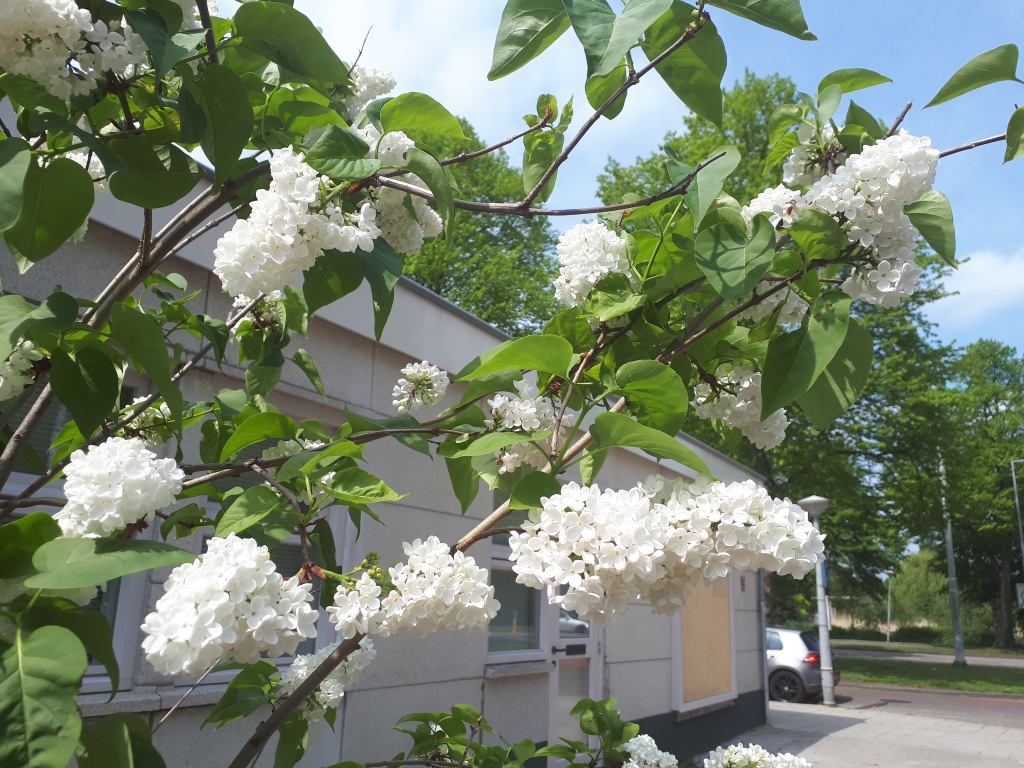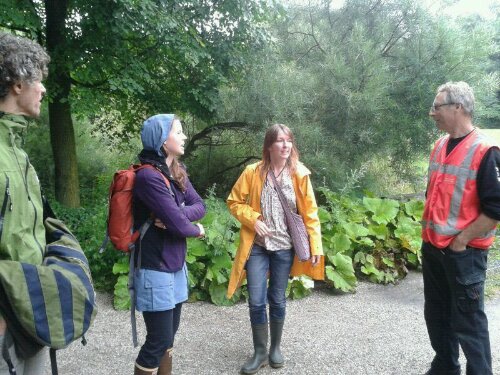“Once we have tasted this wildness, we begin to hunger for a food long denied us, and the more we eat of it the more we will awaken.” Stephen Harrod Buhner

Welcome to the World of Urban Foraging!
Amsterdam, The Netherlands, is my usual foraging ground where I offer regular guided herb walks in local parks and streets. I would love to see more people feeling confident about harvesting and cooking some of the safe nutritious herbs / weeds /fruits which grow so freely around us.
However foraging requires good knowledge and responsibly. Below you will find some basic urban foraging rules and a few herbs which may be growing close to your home. Please refer to the blogposts in the foraging category for more urban edible ideas and explore the links in the sidebar for more information.

Walks
If you are in Amsterdam, do join one of my herbal foraging walks. I am a member of the Association of Foragers. You can read about my background here.
If you are interested in a herb/foraging walk which is not listed on the events page then do contact me and I’ll see what I can do to help. Wherever you are based, find out all you can about the plants growing around you. I also offer courses, with theory and practical exercises online.

365
I ran a project called 365 Frankendael in 2012-13. Each day I posted photos and brief details of street and park herbs in season in Amsterdam. My local Park Frankendael was the focus (hence the project name) but it shows what grows in the city as a whole and reflects what can be found in other cities. My friend Valerie Turner helped me to organise the info (a LOT of herbs were found!) so I’ll make it into some sort of book / online resource one day. For now, sit down with a cup of tea and check out the posts – there are 365 of them.
Endangered and threatened plant species, in the Netherlands.
Link to a current list. If you know of a better list please let me know. I also want to post a list for the UK and Europe in general here.

Foraging tips
There are many public spaces in the heart of Amsterdam where ripe herbal fruits, leaves and flowers can be found at any moment. Wild cherry, chickweed, dandelion, mallow, nettle, chestnuts, yarrow, walnuts and sloes, are just a few treats you could find.
Urban herbs are rarely far away, growing on walls, roadsides, between paving stones and in untended spaces. Pollution from cars, people and pets mean that not all locations are suitable to harvest from, but urban foraging is good fun and can be very rewarding throughout the year.
Most people have foraged fruits such as blackberries at some time or other but few harvest herbs on a regular basis yet there are so many available to us! This weekend consider taking a herb walk with family or friends, through some local green and relatively clean area of your city.
Try to build your knowledge of local herbs and how to use them. If you don’t feel confident enough to pick, then notice where a few useful herbs grow on your way to work or in your local park. There are so many edible wild plants in this part of Europe, I’m sure more people could find and make use of at least one or two.
Consult good books and experienced local foragers to ensure you forage safely.

Where to look:
I prefer to harvest from the greener parts of cities and in Amsterdam there is choice. We have some relatively clean canal side verges (don’t pick from the canal walls!), lots of parks, trees on quiet roads and hedgerows away from main roads. I avoid herbs from beside busy roads or other places where pollution is likely. I also try to pick from as high up as possible, to avoid plant material that has been soiled by passing people and animals.
How to identify the herbs:
Stick to herbs you are totally, 100% certain of and use a good field guide and a good foraging guide when harvesting any herbs you are new to. I am rarely parted from The Wild Flower Key: British Isles – N.W. Europe, by Francis Rose and Hedgerow by John Wright – Both excellent).

Picking rules:
Double check the identity of everything you pick (or consider picking). If in doubt don’t pick or use.
Forage easily identifiable herbs and avoid those which may be easily confused with poisonous relatives or look-a-likes.
Try anything new to you in very small quantities. Remember that one person’s medicine can be another’s poison. Be cautious.
Forage only from areas where there is plenty of the herb you are interested in.
Be considerate, careful and moderate.
Pick sparsely to help conserve the health of the plant, it’s appearance and the wild animals it supports. Never strip all the leaves, berries or whichever part you are interested in from a plant, however tempting. Take only a little from each plant, leave plenty and avoid harming plants by rough picking.
Flowers or seeds of annual plants shouldn’t be picked, their seeds are needed for their survival.
Never pull up whole plants or pick from rare plants.
Have fun foraging!

Urban Foraging Course
If you want to learn A LOT MORE about living in harmony with nature, in towns and cities, why not apply to join my Apprenticeship Course? It is very informative, fun, has real life tutor contact, you get to join my walks for half price and it is accredited by the CMA. That can’t be bad!